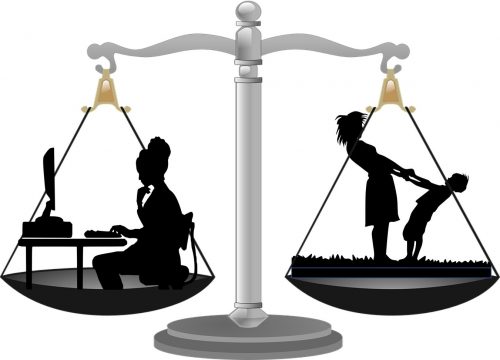Work-Life Balance is about the equilibrium between our job and non-job roles. While the term has been around for decades, there is no consensus definition. Historically, the concept of work-life balance has shifted significantly, with past generations often prioritizing work over personal life, a trend that has gradually changed with growing awareness of mental health and quality of life.
In today’s job market, a healthy work-life balance is increasingly becoming a key factor for employees when choosing an employer, and companies that fail to recognize this trend may struggle to attract and retain top talent.
Apportionment of time and conflict between the roles are prominent factors. Their relative contributions to satisfaction and happiness are also important.

Definition
The following list demonstrates the range of definitions of work-life balance:
- The amount of time a person spends at work compared with the amount that they spend with family and doing what they enjoy.
- Achieving and enjoying things on a daily basis in four areas of life: work, family, friends, and self.
- Managing personal and professional priorities and the extent to which the job-related ones dominate.
Many definitions focus on time spent in job as opposed to non-job roles, according to a 2020 occupational health handbook. Our satisfaction with the amount of time we spend in these roles is also a common factor, as is the relative importance of the roles and how happy we are with our performance in them. The authors also note that there is increasing evidence of a connection between work-life balance and employee retention.
Examples of use
The following sentences demonstrate typical uses of the term:
A wise employer knows that employees with a good work-life balance are more productive, reliable, and loyal.
George is concerned that his promotion may upset his work-life balance as it will involve longer hours and working away from home.
It will be interesting to learn how the coronavirus pandemic may have altered perspectives on work-life balance.
Some key points
Time is often the main concern when we talk about work-life balance. However, while it is an important factor, striking the right balance is not necessarily about apportioning time equally between work and non-work domains.
Chrissie, an office worker, does a 30-minute jog every day. Stu, a mall security guard, goes rock-climbing most weekends. Both find that the physical challenge and mental absorption of these activities offset many working hours.
Boundaries between job and non-job aspects of life can also be a factor. Advanced telecommunications – such as smartphones and the Internet – are now part of daily life. On the one hand, they help us stay in touch with family and friends and access information. On the other hand, however, the technology has enabled some workplaces to foster an “always on” culture that allows the job to invade personal time.
According to the International Labour Organization (ILO), reduced working hours and some forms of flexible working can improve work-life balance. Conversely, excessively long hours and unpredictable work patterns can hinder it.
Others also cite flexible work and leave arrangements as the key to achieving work-life balance. Employers are increasingly recognizing that the balance is not the same for everyone. It can also shift over time, as families grow older and commitments change.
A 2020 study of working adults in Europe found a strong link between poor work-life balance and poor self-reported health. The researchers investigated the conflict that male and female workers experienced between work and home roles. They then looked at how that might link to workers’ reports on their state of health.
Tips for employers
Sage suggest that managers can enhance the work-life balance of their staff by:
- Offering opportunities for remote and flexible working.
- Focusing on productivity rather than counting working hours.
- Encouraging and supporting breaks during the working day.
- Conducting regular workload reviews.
- Nurturing their own healthy work-life balance and leading by example.
- Making sure employees take their holidays.
- Giving time off for volunteering.
- Supporting parents.
- Offering health plans.
- Asking workers their views on work-life balance and how to improve it.
- Tailoring solutions to individuals and avoiding the “one-size-fits all” approach.
Video – What is Work-Life Balance?
This educational video, from our sister channel on YouTube – Marketing Business Network, explains what ‘Work-Life Balance’ is using simple and easy-to-understand language and examples.
